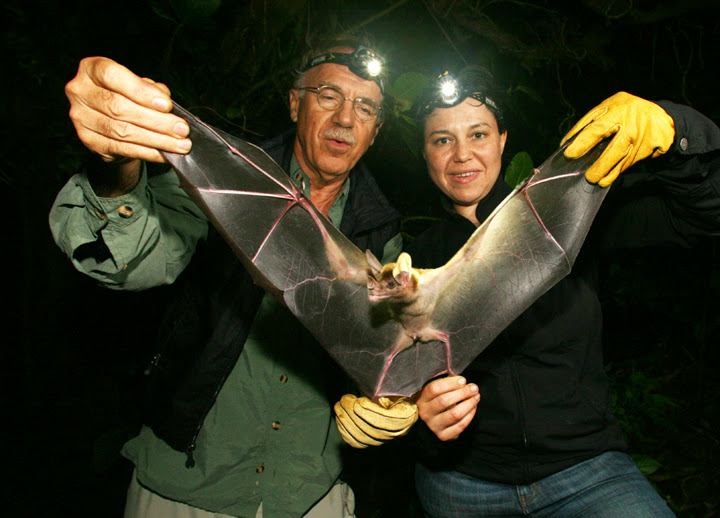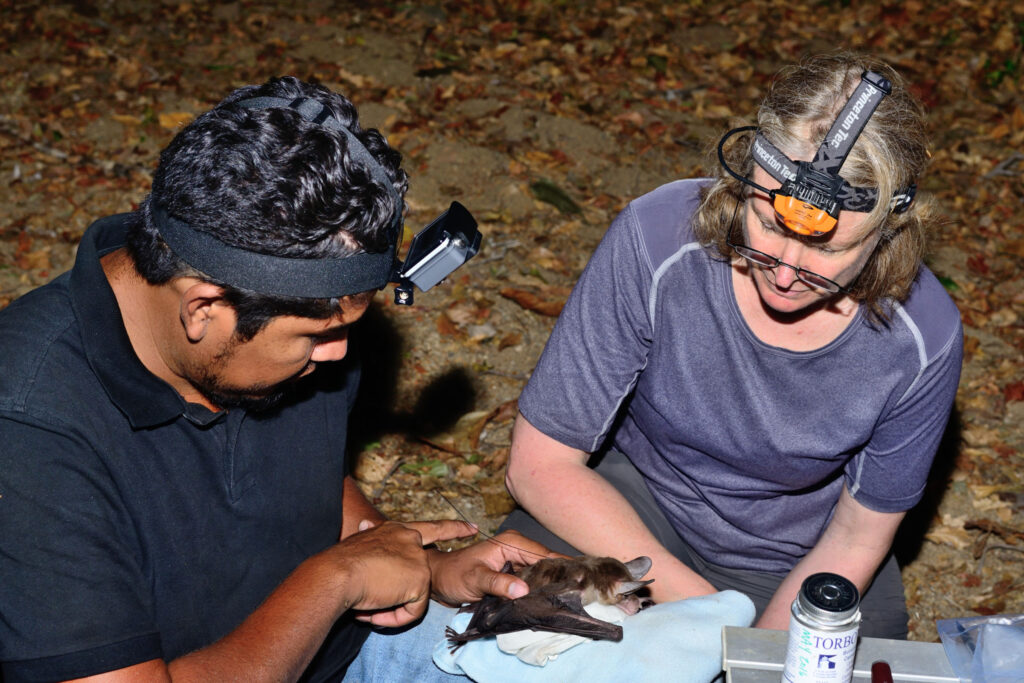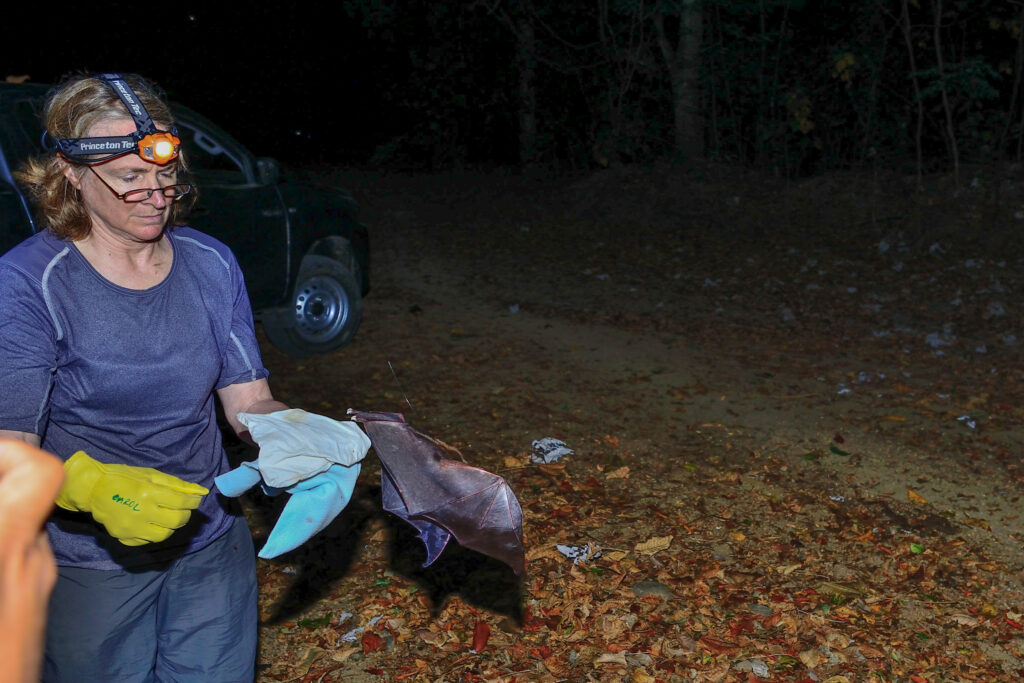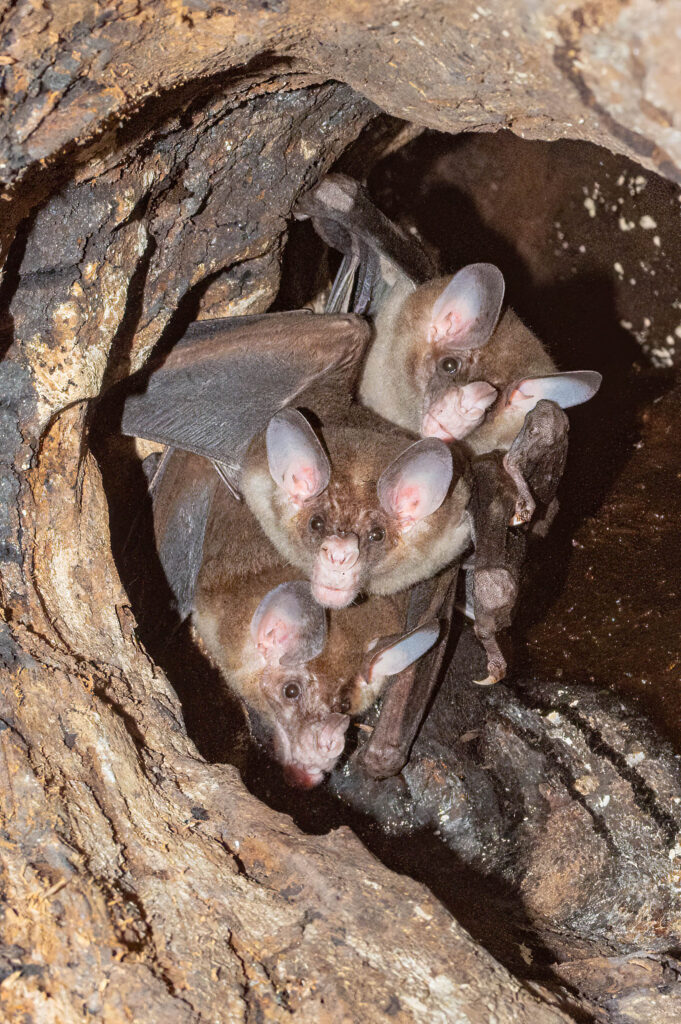The great false vampire bat (Vampyrum spectrum) is the largest bat in the New World, and the largest carnivorous bat in the world. It can look scary when its wings are extended.

Notice the word “false”? Because this bat doesn’t suck blood, it’s not a true vampire bat. But it is carnivorous, which means that it can eat a LOT of insect pests and other small mammals, including rodents. This bat is good for ecosystems!
Sadly, it is also threatened — presumably due to loss of habitat.
But what is its habitat? Up until recently, we didn’t really know much about its way of life. This is where donors like you came in.


With the support of donors like you, in 2017, we assisted Dr. Carol Chambers and Nicaraguan graduate student José Gabriel Martínez-Fonseca, both from Northern Arizona University, as they worked through long nights to locate a vampire bat colony. First, they captured a female false vampire in their non-harming nets and placed a radio-collar on it. Then, they used radio telemetry to hone in on a hollow 40 feet up in a tree. They climbed up, and in there they found the bat, along with its whole family! This was the first roost of this species documented in Nicaragua.
The researchers returned in October 2023. Thanks to your support, Paso Pacífico team members assisted them once again. And guess what?! The bat family was still there! Here they are.

This discovery is the first of its its kind for this charismatic and threatened bat species. Friends and donors like you help make it possible for us to collaborate with scientists like Dr. Chambers and the newly graduated Dr. Jose Gabriel Martinez-Fonseca. Thank you!
One thing we have learned is that roosting trees can serve as permanent homes to vampire bats. To protect bats, we must save large, old trees.
The tree in this study stands within the agricultural and forest matrix of the Paso del Istmo Wildlife Corridor. Because you helped us to support farmers in protecting this tree and forests across the corridor, this bat and its family, are still happily living there six years later.
You — and other donors like you — are helping bats and returning our world to its natural beauty.
You love bats like we do. They are the only mammals that can fly in the sky. And I know it can seem like supporting niche conservation research can seem like it isn’t that big of a deal. But it’s meaningful to Mother Nature. It’s meaningful to you and me. And it makes our shared world better, a little bit at a time
Thank you for caring about bats. Your generosity is an inspiration. And of course, if you’d like to help another bat today, you can click here.
P.S. If you’d like to learn more, see this 2017 video and this 2023 video from Dr. José Gabriel Martínez-Fonseca, who co-led the project. And to help our research continue, you can always make a gift today.